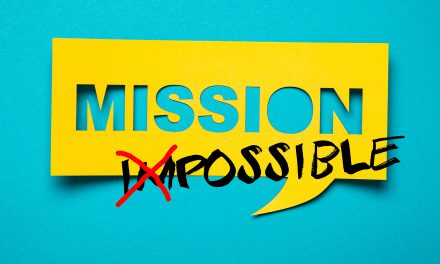Trying to make ‘perfect’ choices in a dynamic world is a recipe for disaster
Business Owners have to make hundreds of decisions every day. They can’t avoid making decisions. In fact, avoiding making a decision is simply a decision in itself.
Amazon Chief, Jeff Bezos, says there are two types of decisions, Type 1 – mission critical, high impact decisions that affect overall strategy… and Type 2 – lower impact choices that can be easily reversed if necessary.
Bezos goes further, he suggests it’s possible, no advisable, to make decisions with just 70% of the ‘perceived ideal information’. For many business owners of a certain behavioural style this will be a struggle to comprehend.
Thing is, for most decisions, after a certain point, information and time provide diminishing returns… because the longer you take to make a decision, the less you’re likely to gain from taking such time and the more you’re likely to lose by falling behind your competition.
Of course, this doesn’t apply to every situation, but in my experience any benefits derived from procrastination usually get outweighed by the revenues lost by the delay.
About a decade ago, one of our businesses was considering installing new technology which would have added a new product line to the business. As the technology hadn’t yet been proven, we decided to take our time and research equipment, making sure we bought the right machine at the right price.
We took 2 years to decide on a machine. It was excellent. High quality, great price. We were happy and that machine quickly began to produce revenues of £20k each month. We bought a second machine a year later and now they account for almost 40% of the turnover of that business.
In the end, we didn’t save any money when we bought the machine and we lost out on two years of profitable turnover. Worse still, two competitors who had bought inferior machines two years earlier had achieved significant growth during that same time.
Conclusion – it’s far smarter to let go before you’re ready, and then iterate and improve based on feedback from lessons learned by the experience. I once heard that described as ‘Ready, Fire, Aim”… oh, that reminds me of the great book of the same name by Michael Masterson.
Keep in mind, in business, choices are rarely individual events and almost always have implications that extend over long periods and so will require adjustments from time to time. Trying to make ‘perfect’ choices in a dynamic world is a recipe for disaster.
“Avoiding making a decision is simply a decision in itself”
Carl Spetzler, director of the Strategic Decision and Risk Management program at Stanford University and CEO of the Strategic Decisions Group, takes a slightly different approach.
Spetzler suggests there are 3 types of decisions to be made and helped develop a decision-making framework to guide business owners in making choices about everything from potential acquisition targets to international strategy.
Today, this framework is popular with many of the world’s top businesses
Spetzler’s three basic types of decisions:
Strategic Decisions – Managers have weeks or months to make these decisions, which have life-shaping effects on a corporate or personal level. Strategic decisions are very important, involve significant uncertainty and complexity, and are hard to think through.
Typical Decisions – These decisions often come from team meetings that last a few hours. They can have a big impact, but they are frequently tactical in nature and arrived at through a collaborative process.
In-The-Moment Decisions – For decisions made on the fly, managers use a different part of the brain that emphasises rapid pattern recognition. Beginning with limited or incomplete information, they habitually look for similarities to experiences they’ve had in the past.
Spetzler’s six elements that go into making a good decision:
- Work at cause not effect – make sure you’re solving the right problem in the first place
- Get clarity on your objective – eg do you want to grow or consolidate?
- Consider all options – get creative and think outside of the box
- Gather the right information – even if you’re uncertain of some of it
- Reasoning – which includes what you know and what you don’t
- Commit to make it happen – since a decision is no stronger than its weakest link
Sometimes, we don’t get all the information we need to make a decision, so we often end up making decisions based on experience and intuition.
Consider a significant decision failure in your own organisation’s past. Now consider which of the above elements may have contributed the failure. What could you have done to improve the decision-making process and avoid the same issue occurring?
Behavioural style can significantly affect our decision making
When people become aware of their natural biases and habits, it becomes easier to avoid them. For example, I like to think I’m a big picture kind of guy, the 10,000ft view as my old friend Ian Stewart calls it.
I’m great at the beginning of projects but halfway through, I have to turn it over to people who can dot the “I”s and cross the “T”s so it comes in on schedule. If I keep a hold on such projects, it can become a disaster as important tasks get caught up in my BAU (business as usual) and fail to be completed on time.
Yet most people drag a problem into their comfort zone instead of solving it. The key is to recognise where these issues may impact on good decision making and adapt to avoid any problem.
Back to Bezos and Amazon
If you’re a creative person, your creation is almost never going to feel perfect. Dwelling on the minor tweaks before sharing that work will eat up way more time than the yield of the potential improvements is worth. It’s far smarter to let go before you’re ready, and then iterate and improve based on the feedback.
Drawing the line between good and perfect not only keeps us active, but it also ensures that we don’t get too attached to our choices.
For Bezos and Amazon, the line is drawn at 70% of what they might perceive as the ideal information. Beyond this, they focus on careful corrections. This process enables fast action without compromising on the quality of that decision.
This explains how Amazon have been able to enter and dominate so many industry sectors. Less time deciding means more decisions and quantity eventually leads to quality.
Correcting the wrong is less costly than not taking action, and more often than not, correction of some sort is a necessity anyway.
So, draw a line and use feedback to improve.





